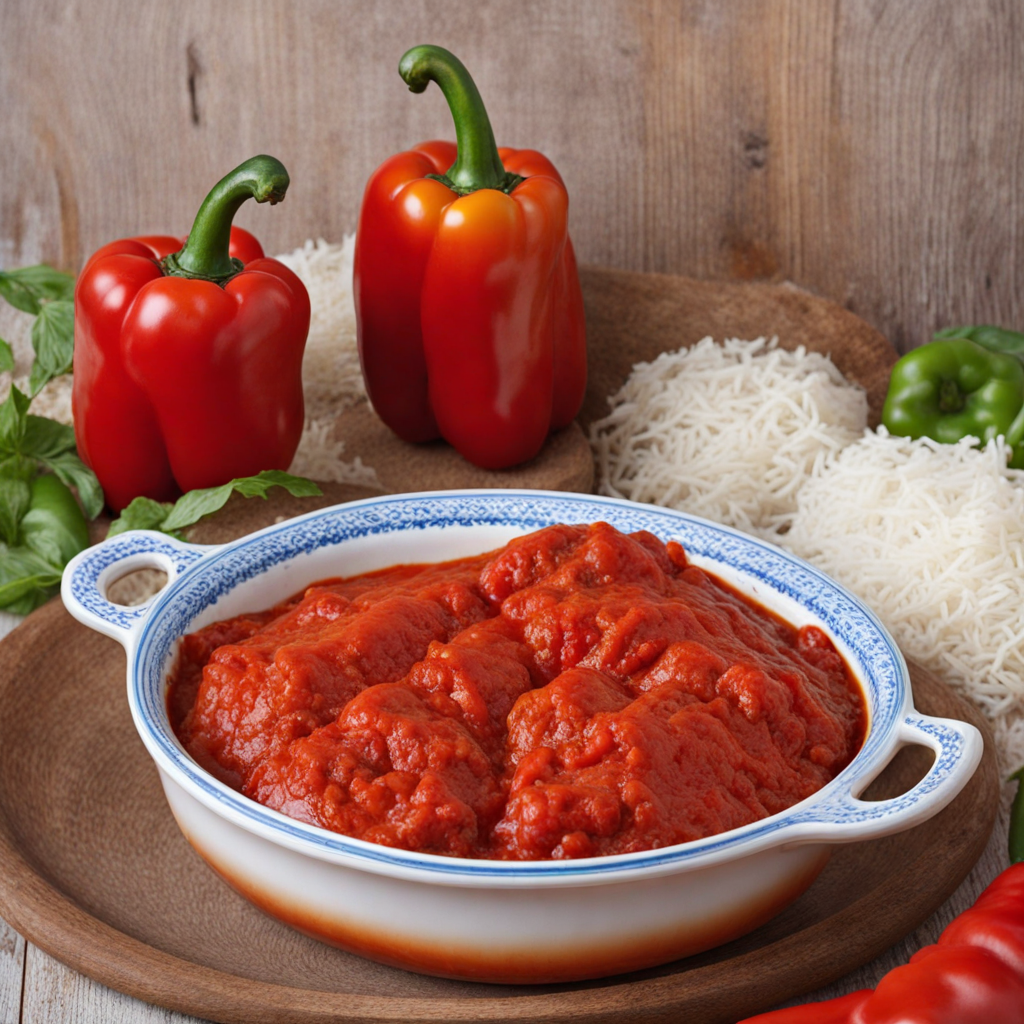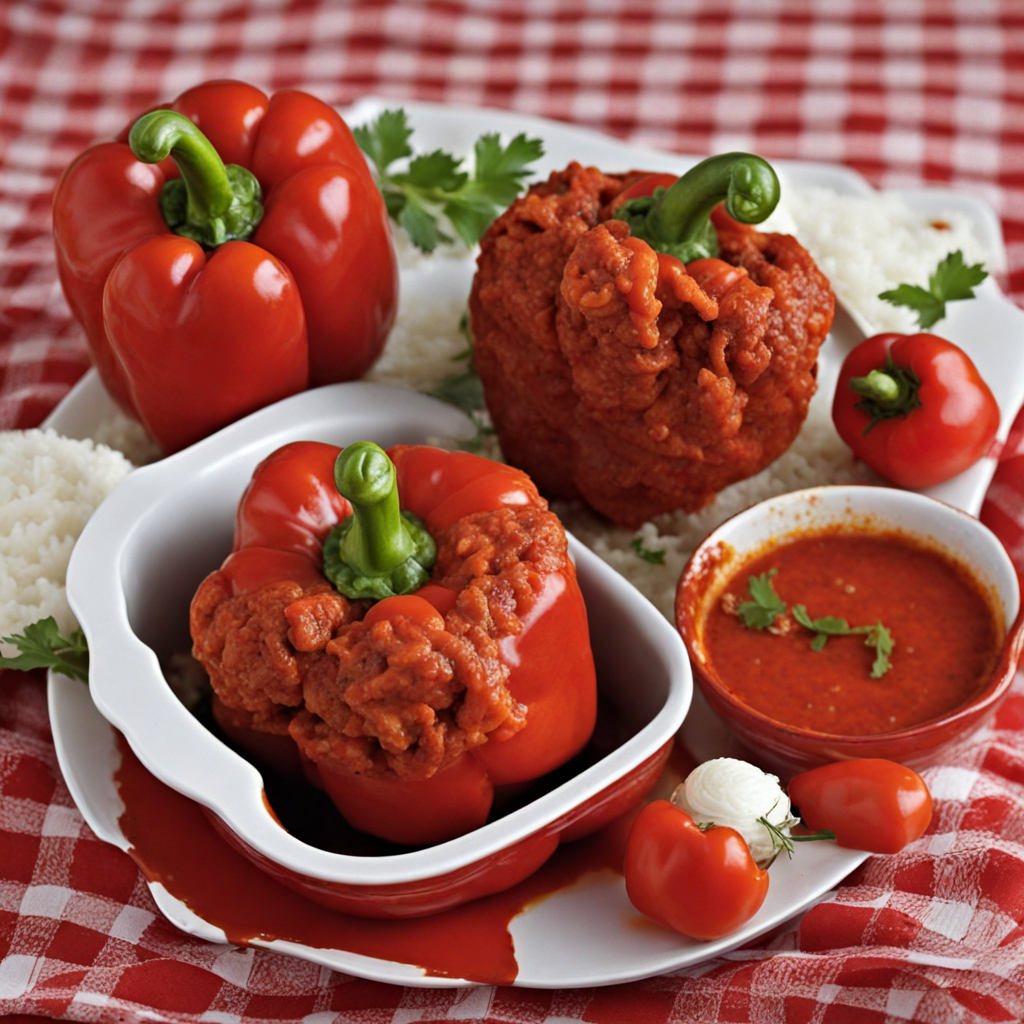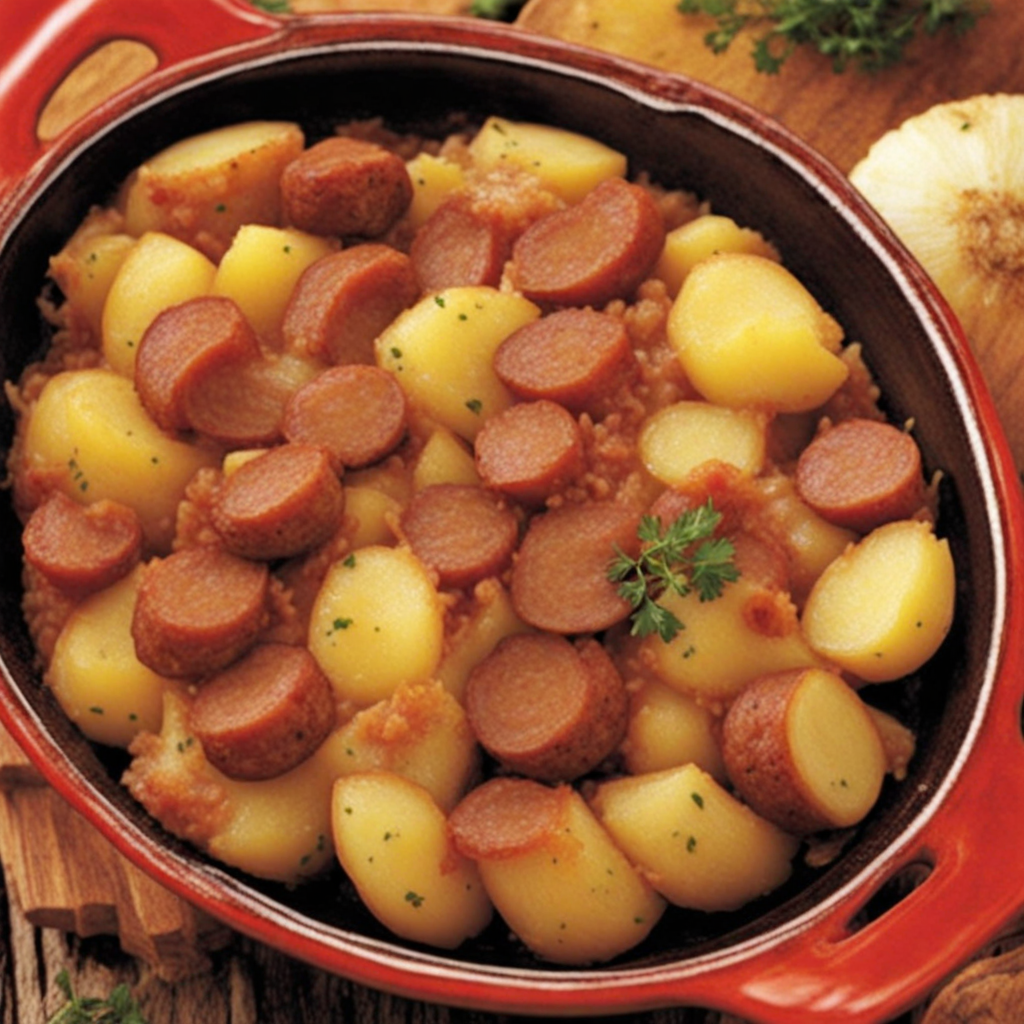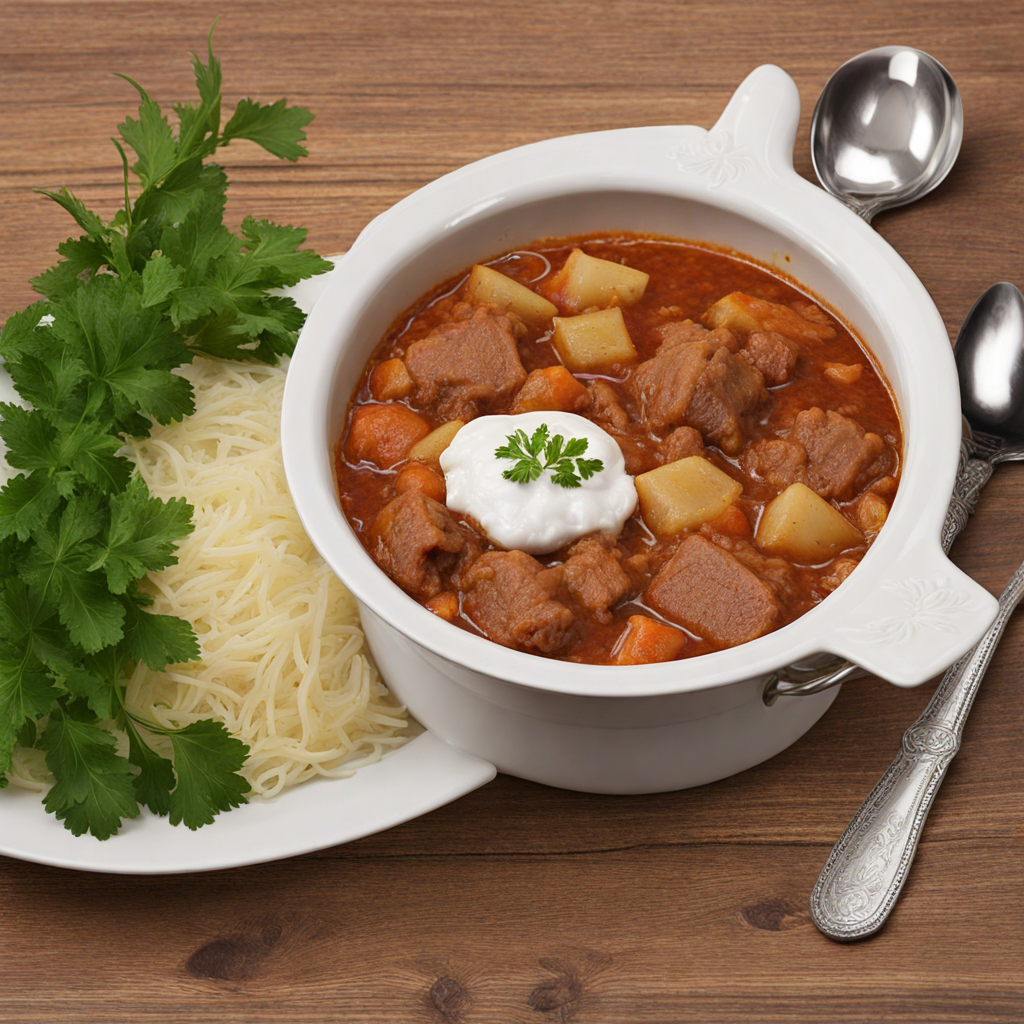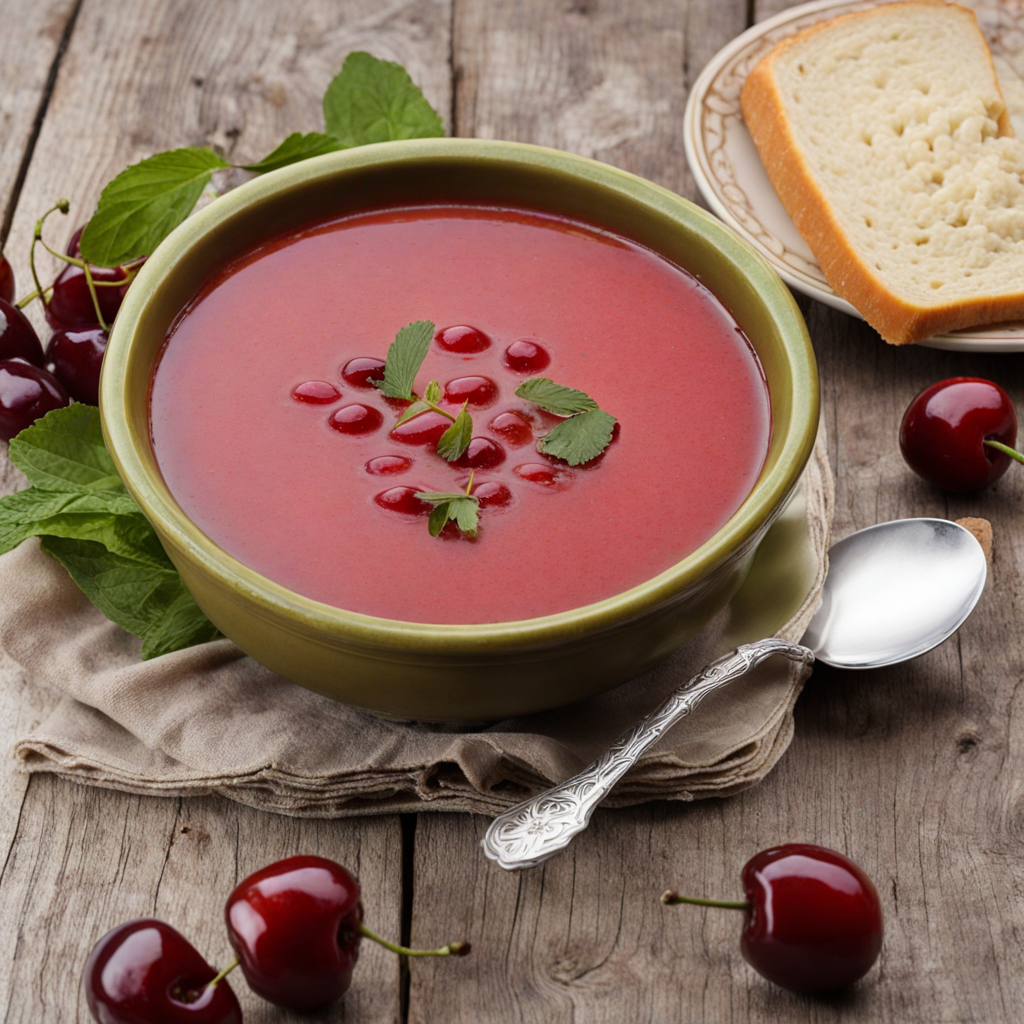Töltött Paprika
Töltött Paprika, or stuffed peppers, is a quintessential Hungarian dish that beautifully showcases the country's rich culinary heritage. Typically made with large, vibrant bell peppers, this dish features a savory filling that often includes a blend of ground meat—commonly pork or beef—mixed with rice, onions, and an array of spices. The peppers are hollowed out and generously filled, then gently simmered in a flavorful tomato sauce that adds depth and a hint of sweetness to the overall profile. The melding of these ingredients creates a comforting and hearty meal that is both satisfying and delicious. What sets Töltött Paprika apart is not just its taste, but also its versatility. While the traditional version relies heavily on meat, many variations incorporate vegetables, herbs, or even grains for a vegetarian twist. The peppers can be seasoned with a variety of spices, including paprika—a staple in Hungarian cuisine—adding a warm, smoky flavor that elevates the dish. Each bite delivers a delightful combination of textures, from the tender pepper to the juicy filling, making it a delightful culinary experience. This dish is often served with a dollop of sour cream on top, which adds a creamy richness that complements the spices and acidity of the tomato sauce. Töltött Paprika is more than just a meal; it is a celebration of flavors and traditions that has been passed down through generations in Hungary. Enjoying this dish is like taking a journey through Hungary’s vibrant food culture, making it a delightful choice for anyone looking to explore new tastes.
How It Became This Dish
Töltött Paprika: A Flavorful Journey Through Hungarian Culinary History Töltött paprika, or stuffed peppers, is a beloved dish that encapsulates the essence of Hungarian cuisine. Its combination of vibrant flavors, hearty ingredients, and cultural significance makes it a quintessential representation of Hungary's rich culinary heritage. This dish, while simple in its concept, carries a deep historical narrative that reflects the evolution of food practices, societal changes, and regional influences. Origins: A Culinary Mosaic The origins of töltött paprika can be traced back to the introduction of the bell pepper to Hungary in the 16th century. Originally brought from the Americas by Spanish explorers, bell peppers quickly adapted to the Hungarian climate and became a staple in local farming and cooking. Hungarian cuisine, known for its use of spices and fresh ingredients, embraced the bell pepper, incorporating it into various dishes. The practice of stuffing vegetables can be linked to ancient cooking traditions, where various cultures used available ingredients to create satisfying meals. Historically, the act of stuffing peppers can be seen as a reflection of the resourcefulness of Hungarian cooks. With a bountiful harvest of fresh vegetables in the summer months, families would often preserve food for the colder seasons. Stuffed peppers, filled with a mixture of rice, meat, and spices, allowed for the use of leftovers and made the most out of seasonal produce. This practice was not limited to Hungary; variations of stuffed vegetables can be found throughout Mediterranean and Eastern European cuisines, highlighting the interconnectedness of food traditions. Cultural Significance: A Symbol of Home and Heritage In Hungary, töltött paprika is more than just a dish; it is a symbol of home, family, and cultural identity. Traditionally served during family gatherings and festive occasions, it evokes feelings of nostalgia and communal bonding. The dish is often prepared by mothers and grandmothers, passed down through generations, each adding their unique touch to the recipe. The act of cooking töltött paprika becomes a shared experience, where family members gather to help fill the peppers, creating both a meal and cherished memories. Töltött paprika is also intertwined with Hungarian hospitality. Serving this dish to guests signifies warmth and generosity, reflecting the deep-rooted value of community in Hungarian culture. At weddings, holidays, and other celebrations, it is common to find stuffed peppers gracing the dining table, symbolizing abundance and good fortune. The dish has also gained recognition beyond Hungary's borders. As Hungarian immigrants spread across the globe, they carried their culinary traditions with them, including the beloved töltött paprika. In places like the United States and Canada, Hungarian communities continue to celebrate their heritage through food, ensuring that this dish remains a vital part of their cultural identity. Development Over Time: Regional Variations and Modern Adaptations As with many traditional dishes, töltött paprika has evolved over the centuries, adapting to regional preferences and available ingredients. While the core of the dish remains consistent—bell peppers stuffed with a mixture of rice and meat—the specific ingredients and preparation methods can vary widely. In Hungary, the most common filling consists of ground pork or beef mixed with rice, onions, paprika, and sometimes tomatoes or other spices. However, various regions have developed their unique takes on the dish. For instance, in the southern parts of Hungary, particularly in the Szeged region, the filling may include smoked sausage or even a hint of paprika paste, reflecting the local palate. In contrast, the northern regions may lean towards a more straightforward filling, focusing on the purity of the meat and rice. Vegetarian adaptations have also gained popularity, especially in modern times when dietary preferences have shifted. Many people now prepare töltött paprika using grains, lentils, or a medley of vegetables, allowing for a dish that caters to a broader audience while retaining its traditional roots. The cooking method for töltött paprika has also seen innovation. Traditionally, the stuffed peppers are simmered in a rich tomato sauce, absorbing the flavors over a slow cooking process. However, contemporary interpretations may involve baking or even grilling the peppers, introducing new textures and flavors to the dish. Some chefs have experimented with fusion cuisine, incorporating international flavors into the filling or sauce, showcasing the adaptability of this classic recipe. Conclusion: A Dish That Unites Töltött paprika is more than just a meal; it is a narrative of Hungary's history, culture, and resilience. This dish has endured the test of time, evolving through agricultural changes, migrations, and modern culinary trends. It encapsulates the spirit of Hungarian hospitality and the importance of family and tradition. As the world becomes increasingly globalized, the appreciation for traditional dishes like töltött paprika continues to grow. Home cooks and professional chefs alike are rediscovering the beauty of this dish, celebrating its heritage while giving it new life. Whether served at a festive gathering or enjoyed in the comfort of one’s home, töltött paprika remains a beloved staple that brings people together, bridging generations and cultures through the universal language of food. In each bite of this savory and satisfying dish, one can taste the rich tapestry of history that has shaped Hungarian cuisine. Töltött paprika is not just a recipe; it is a culinary emblem that tells the story of a nation, embodying the flavors, traditions, and heart of Hungary.
You may like
Discover local flavors from Hungary


